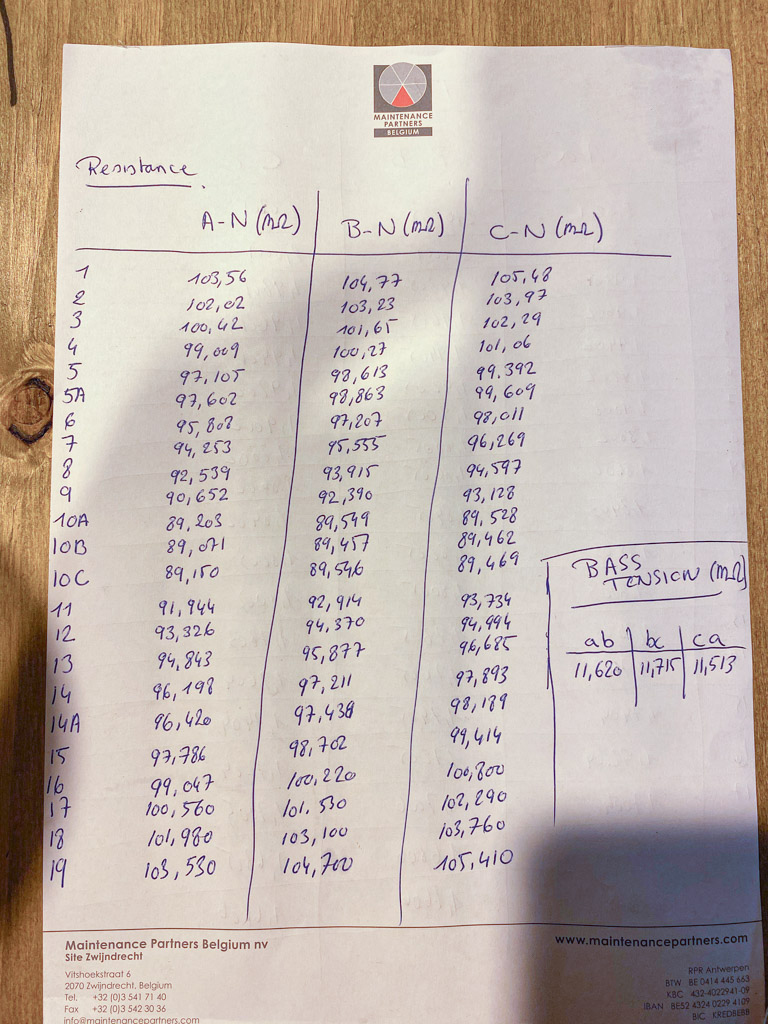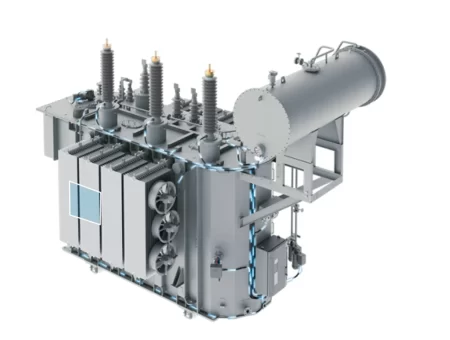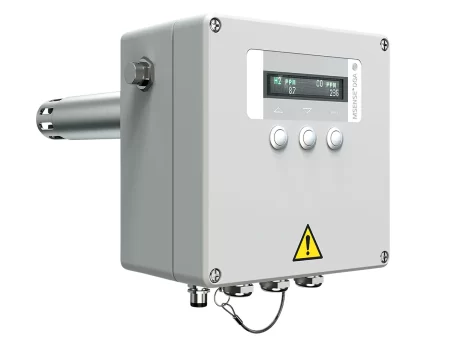power transformer that has been in use for many years is like a person: It ages and needs more frequent health checks. Over time, the costs add up—especially if the transformer requires replacement parts that are no longer available or difficult to come by Belgian grid operator Elia was facing this exact problem in its primary substation in Zaventem, in the exurbs of Brussels. A transformer had gotten older and the tap changer inside was worn out. Since the manufacturer had ceased production back in 1989, replacement parts were increasingly scarce and expensive.
However, a new transformer was out of the question for Elia. After all, all other components were still functioning without problems. So the grid operator commissioned service provider Maintenance Partners, together with the Reinhausen Luxemburg (RLU) subsidiary, to replace the old tap changer with a new one in early May, thus future-proofing the transformer.
The entire conversion took only ten business days, despite the added complications of the coronavirus pandemic. Sebastian Hölzer, Managing Director of RLU, explains how the team got it done in six steps:
1 GETTING TO KNOW THE OLD TRANSFORMER
Every power transformer is different. For that reason, we first compiled all the information from the transformer book and nameplates. This included the power of the transformer, the line and insulation voltages and the supply voltage for the motor-drive unit. Furthermore, we were able to use this data to determine how much current was supposed to flow through the new tap changer and how the electrical wiring should look.
2 SELECTING COMPONENTS
With this preliminary knowledge, it was clear that only a three phase VACUTAP VM 500 with Y connection would be a possible tap changer, which requires almost no maintenance in comparison to the old OILTAP OLTC. Furthermore, our experts in Regensburg explained how the adapter flange needed to look for the switch head, so that we could insert the new tap changer into the opening of the old one. We also specified the equipment of the motor-drive unit together with Elia. We then produced the tap changer and drive in-house. A third-party steel manufacturer produced the adapter flange.
3 PREPARING THE TRANSFORMER
Before replacing the tap changer, the service provider Maintenance Partners prepared the equipment for two days. The transformer first needed to be switched off and grounded. Oil was then drained from the transformer tank and manholes were cut in the 15-millimeter thick transformer wall. This allowed our technicians to climb into the inside of the cramped transformer tank, in full-body suits, and start the replacement work.
4 REPLACING OLD WITH NEW
First, the old tap changer needed to be removed. To do so, we cut open the cover using a blow torch and lifted the tap changer out of the transformer tank by crane.
We were then able to bring in the oil compartment of the new tap changer, along with the diverter switch insert, and position the selector. Then we connected the selector in the transformer with the tap winding and to the old supply lines via individually adjusted cables. Finally, the motor-drive unit and the linkage from the tap changer to the drive were attached.
5 TESTING AND MEASURING
In the next step We did testing. For this purpose, experts from Maintenance Partners measured the transmission ratio at low voltage to see whether the tap changer stepped down the voltage properly. In this way we were able to ensure that all supply lines were attached to the correct points on the selector. Measurements of the resistance and isolation took place later.
6 BACK ON LINE
This concluded the work onsite. Maintenance Partners closed the transformer tank again and filled it with oil. The oil was then treated — in other words, dried, degassed and cleaned to remove contamination particles. For this purpose, the filled transformer needed to be connected to a processing system for several days. Afterwards, we handed the transformer over to Elia and, after a two-day no-load test, it was back on line.
“Next to the quality of the OLTC itself, the quality of the replacement work is also crucial to guarantee a high reliability of our transformers. Therefore Elia was happy to count on the partnership between one of its local transformer maintenance suppliers and MR to realize this challenging replacement program.”
Benjamin Pierre, Operational & Safety Excellence Manager at Elia
Source:
https://onload.reinhausen.com/en/12-2020/old-transformer-like-new-again/











User comments